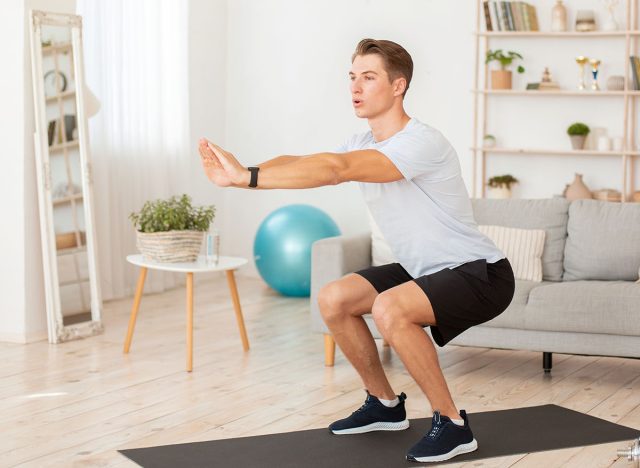Over 45? If You Can Do This Many Squats Without Stopping, Your Leg Strength Beats 90% of Your Age Group

Strong legs carry you through life, literally. They power every step, support your joints, and help you get up from the ground with ease. After 45, leg strength becomes one of the biggest predictors of long-term independence. The ability to knock out a high number of squats without pausing is more than just a fitness challenge, it’s a measure of durability and lower-body power.
Muscle mass naturally declines with age, which can leave you feeling weaker, slower, and less stable. Squats fight this decline by recruiting multiple muscle groups at once, quads, glutes, hamstrings, and core, to rebuild strength. Each rep improves how you move in daily life, whether you’re climbing stairs, lifting groceries, or getting up from a low chair.
Being able to perform many consecutive squats shows that your legs aren’t just strong, they’re also resilient. Endurance under load keeps your muscles firing efficiently and supports better balance, posture, and overall mobility. Here’s how to assess where you stand and build up to elite strength levels.
The Bodyweight Squat Challenge
Knocking out multiple squats in a row demands both strength and stamina. Your lower body must work as a unit to stay aligned while your heart rate climbs. The deeper and more controlled the movement, the greater the benefit to your muscles and joints.
How to Do It:
- Stand with feet slightly wider than shoulder-width, toes angled slightly out.
- Brace your core and sit your hips back as if lowering onto a chair.
- Drop until thighs are parallel to the floor while keeping your chest lifted.
- Drive through your heels to return to standing. That’s one rep.
Aim to complete 40–50 squats without stopping to hit the “above average” mark for adults over 45. Hitting 60+ puts you in an elite strength category and shows your legs have the power and endurance to keep you moving well for decades.
Build Up Your Numbers

You don’t need to hit that target on day one, consistency is where the magic happens. Start by doing three sets of 10–15 squats several times per week, focusing on smooth, controlled reps. Once those feel easy, add more reps per set or reduce your rest between rounds.
Mix in lunge variations, step-ups, and glute bridges to strengthen supporting muscles. This balanced approach helps eliminate weak links and keeps your knees healthy. As strength improves, try tempo squats, pausing at the bottom for two to three seconds to challenge your legs even more.
Tracking your progress keeps you motivated. Write down your rep counts weekly and watch as your endurance climbs, usually much faster than you expect once your body adapts.
Why It Works

High-rep squats train strength, endurance, and stability in one shot. They engage nearly every muscle in your lower body and teach them to fire in perfect coordination. This not only builds muscle but also trains your nervous system to respond faster and with more control.
Squats also boost circulation and bone density, keeping your joints nourished and your skeleton strong. The more reps you can perform, the more efficient your body becomes at moving through space, a skill that pays off in everything from sports to daily life.
Developing this kind of capacity helps prevent falls, slows muscle loss, and improves overall confidence in your movement. In short, building high-rep squat strength is one of the most powerful investments you can make for lifelong independence.








